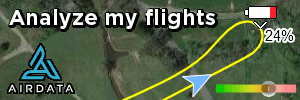I enjoy getting into maps, orthos, 3D models. I've experimented with multiple products... and the time in processing has been lengthy and rewarding. Intend to continue... also looked at some video options too; new SkyBrowse is gaining a lot of traction... particularly in accident reconstruction or when the on-site needs to be prompt... SkyBrowse is now expanding to night or thermal too. I'm a little hesitant to use due to cost for my low volume needs.
Although for quick projects or limited number of projects, is the sUAV and associated software the best route?
Hadn't previously considered, nor examined in-depth until recent, due to an Insurance Roof estimate after hail storm, I was impressed by the various aerial services (eagleview, snaproof??, etc) the Insurance and Roofing shops utilized. They provide professional prepared reports, apparently close measurements & calculations, and they offer similar service for other forms of ground projects: terrain modeling, construction... can provide reports, detailed diagrams and measurements and/or files to use yourself.
The cost isn't excessive per project, results in 1-2 days.
It's another option to consider when it's not your daily activity or you lack the tools or knowledge to produce quickly.
Although for quick projects or limited number of projects, is the sUAV and associated software the best route?
Hadn't previously considered, nor examined in-depth until recent, due to an Insurance Roof estimate after hail storm, I was impressed by the various aerial services (eagleview, snaproof??, etc) the Insurance and Roofing shops utilized. They provide professional prepared reports, apparently close measurements & calculations, and they offer similar service for other forms of ground projects: terrain modeling, construction... can provide reports, detailed diagrams and measurements and/or files to use yourself.
The cost isn't excessive per project, results in 1-2 days.
It's another option to consider when it's not your daily activity or you lack the tools or knowledge to produce quickly.




